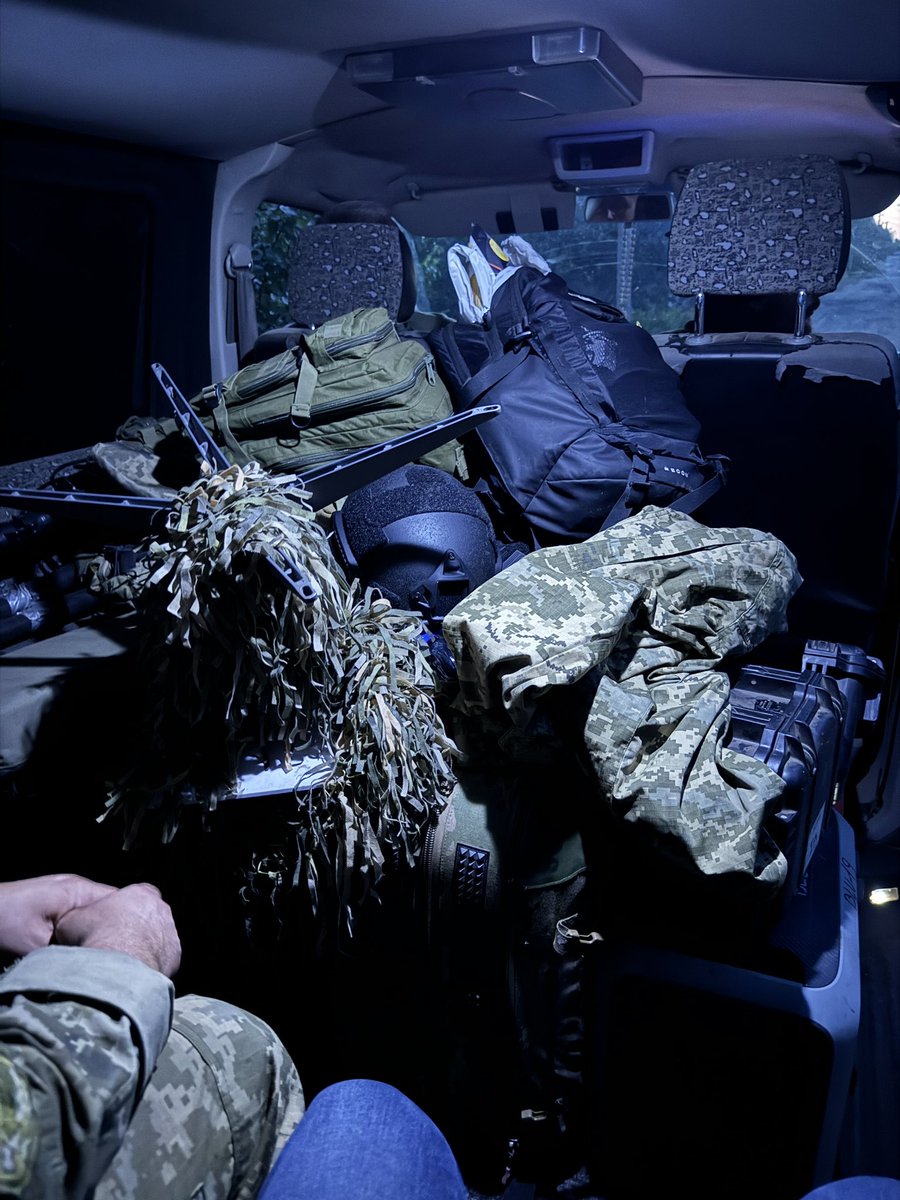I spoke with a tank crew fighting in the battle for Toretsk. Here is what they told me about how tank warfare.
“The Era of the Cautious Tank”
🧵 1/
“The Era of the Cautious Tank”
🧵 1/

In the forested areas surrounding the burning frontline town of Toretsk in Eastern Ukraine, the thunderous roar of artillery and the constant buzz of drones paint a vivid picture of the front in Donetsk Oblast. Here, soldiers from Ukraine’s 28th Separate Mechanized Brigade await orders for their T-64s, although their powerful machines now play a different role in a rapidly evolving war.
2/
2/

“What I enjoy most about driving a tank is when you sit down and drive, and you feel the power of the tank — it’s as if the enemy can’t do anything to you,” says 23-year-old Bohdan, callsign Vendetta. A tank operator since the full-scale invasion began in 2022, Bohdan’s faith gives him courage in the face of danger. However, the invincibility he once felt in his armored behemoth is being challenged by a new threat: drones.
3/
3/

Victor, known as Bee, commented: “Tanks aren’t as effective as they once were. It’s rare for us to see tank-on-tank action now.” This shift is so pronounced that even advanced Western tanks, like the US-provided M1A1 Abrams, have been pulled from the frontline due to their vulnerability to drone attacks.
4/
4/
The sky above the Ukrainian positions is a constant battleground of its own. Enemy and friendly drones crisscross the airspace, hunting for valuable targets like heavy armor and artillery. This aerial cat-and-mouse game has fundamentally altered tank tactics.
5/
5/
“The Russians aren’t idiots. They also understand our drones are hunting their tanks,” Bohdan says. This mutual threat has made both sides more cautious about deploying their armored units. “In 2024, you can have a $500 FPV drone take out a tank worth millions,” he adds, highlighting the cost-effectiveness of this new warfare.
6/
6/
In response to the drone threat, tank crews on both sides have begun improvising. “Many people laughed at the Russians for welding plates and additional armor on their tanks [widely known as turtle tanks, for their appearance], but we’ve started doing the same to protect against enemy drones,” Bohdan says. However, he’s quick to point out that no amount of added armor can defend against everything, especially the ever-present danger of landmines.
7/
7/
The unit was previously stationed in Kherson in 2022, where Bohdan says there were many fewer drones. Now on the Donetsk front, battles are artillery- and drone-dominated.
8/
8/

The unit currently operates modernized T-64s, a Soviet-era vehicle updated in 2017. They’ve equipped the tanks with jammers to counter drones, though these are not foolproof. “It’s not guaranteed that the jammer will protect against all drones as they can operate at different frequencies,” Victor says.
9/
9/
As the nature of combat changes, so too does the role of tanks on the battlefield. “Tanks have become a second priority in war,” Bohdan observes. “It’s now a war of artillery, drones, and infantry.” Instead of spearheading assaults, tanks are increasingly used more like mobile artillery, providing fire support from safer distances.
10/
10/
The evolution of tank warfare brings with it new challenges. Victor, who has experience with the older Leopard I models provided by Germany, highlights the difficulties in operating foreign equipment. “We’ve struggled with manuals as everything is in German,” he says and adds that some of the older donated tanks lack adequate armor for current threats.
11/
11/

Moreover, ammunition shortages further limit the effectiveness of tanks. The crew expresses frustration at having to ration their shells, reducing their impact even when they do engage.
12/
12/
“Tanks will still be around in the future, but FPV drones have changed tank warfare forever,” Victor concludes.
13/ 🔚
13/ 🔚

• • •
Missing some Tweet in this thread? You can try to
force a refresh








